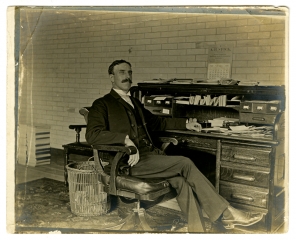DR. ALFRED E. ALTON, ’02
RAYMOND E. BROOKS, ’06
the University and the Union of the two seminaries as the Colgate Rochester Divinity School became possible. The merger was achieved in the summer of 1928 after all formalities had been completed. No longer would the two institutions compete for funds and students; savings could be accomplished by eliminating the duplication of ad-ministration, facilities and faculty; and a greatly improved curriculum could be offered, especially because the Rochester location would enable the faculty to use “clinical material” for training prospective urban pastors, and also make available courses on the graduate level at the rapidly expanding University of Rochester. Instead of two declining Baptist seminaries there was one strong one admirably fitted to educate young men for the ministry. Henceforth, Colgate was to be a non-denominational college devoted solely to the liberal arts.
Among the first areas to receive Dr. Cutten’s attention was finances. James C. Colgate told him the Trustees would be responsible for raising funds; the President concentrated on balancing the budget. By 1924 he had reduced the annual deficit, which had become an item of long standing and which was $34,000 in 1923, to $286.79. This accomplishment without doubt gave Mr. Colgate genuine satisfaction which the record thereafter sustained since no further deficits appeared in the Cutten administration. Making up deficits, which had totaled nearly $700,000 since the 1890’s, Mr. Colgate had come to regard as







